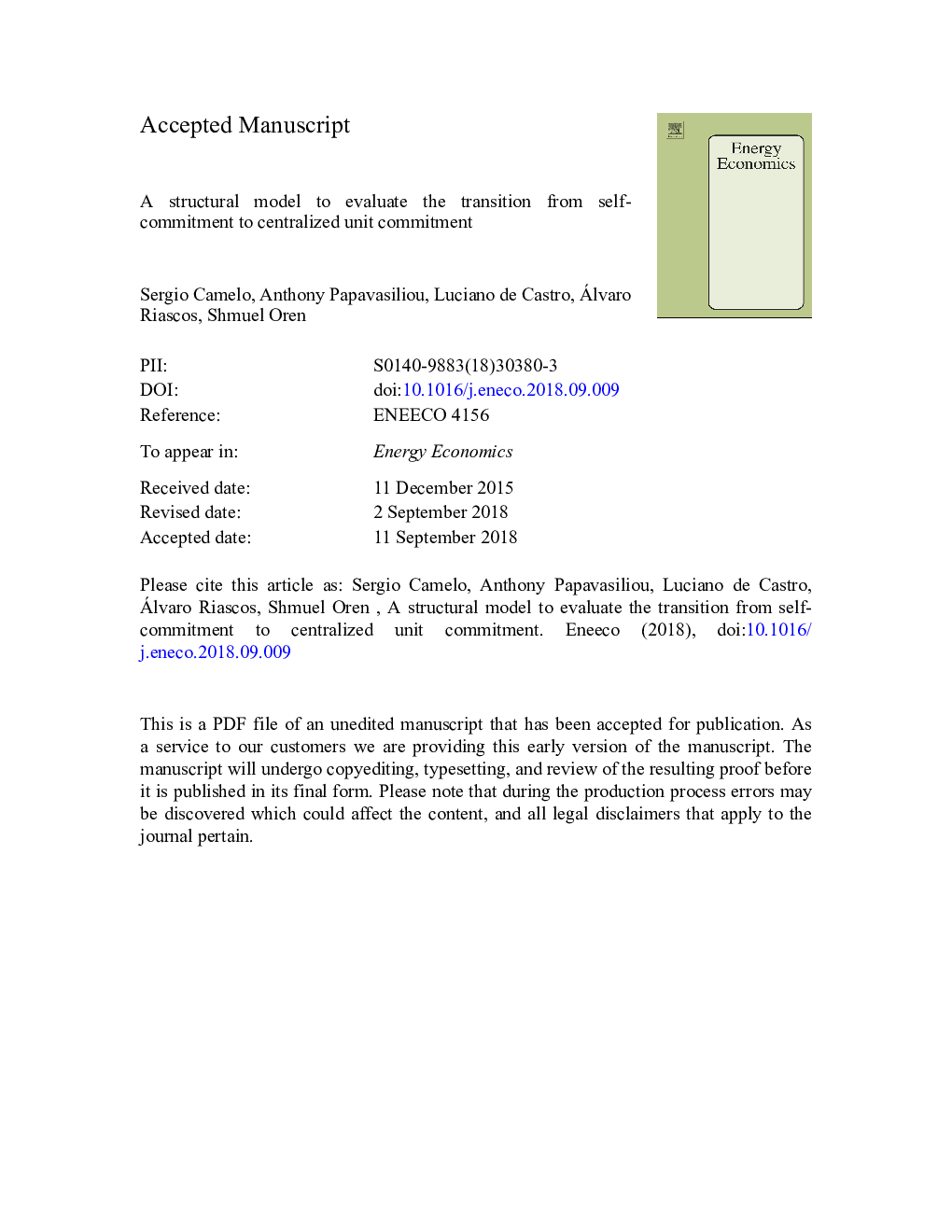| کد مقاله | کد نشریه | سال انتشار | مقاله انگلیسی | نسخه تمام متن |
|---|---|---|---|---|
| 11032320 | 1645626 | 2018 | 35 صفحه PDF | دانلود رایگان |
عنوان انگلیسی مقاله ISI
A structural model to evaluate the transition from self-commitment to centralized unit commitment
ترجمه فارسی عنوان
یک مدل ساختاری برای ارزیابی انتقال از تعهد خود به تعهد واحد مرکزی
دانلود مقاله + سفارش ترجمه
دانلود مقاله ISI انگلیسی
رایگان برای ایرانیان
کلمات کلیدی
ترجمه چکیده
ما یک مدل اعزام اپراتور سیستم مستقل کلمبیا را برای بررسی شایستگی نسبی تعهد خود نسبت به تعهد واحد مرکزی در نظر گرفتیم. ما از انتقال در کلمبیا در سال 2009 از تعهدات خود به تعهد واحد مرکزی و استفاده از داده ها برای دوره 2006-2012 استفاده می کنیم. در تجزیه و تحلیل ما یک امتیاز رقابتی بر اساس هزینه های حاشیه ای تخمین زده شده، هزینه های راه اندازی و هزینه های فرصت های حرارتی و نیروگاه های آبی را شبیه سازی می کنیم. ما تفاوت بین تعهد خود را برای دوره 2006-2009 و معیار رقابتی را به تفاوت بین تعهد واحد واحد متمرکز بر اساس پیشنهاد و مقیاس رقابتی پس از گذار مقایسه می کنیم. بر اساس این مقایسه ها، ما تغییرات در هزینه های کمبود را با توجه به اشتباه ارائه دهندگان هزینه ها و ناکارآمدی اعزام، تخمین می زنیم. نتایج نشان می دهد که تعهد واحد مرکزی به بهبود بهره وری اقتصادی، کاهش از دست دادن وزن نسبی را با حداقل 3.32٪ کاهش داده است. این نتیجه می تواند تا حدی با توجه به این نکته توضیح داده شود که قبل از سال 2009، کمبود انرژی حرارتی نسبت به معیار رقابتی وجود دارد و این ادعا را مطرح می کند که پس از گذار، کارایی ارسال شده بهبود یافته است.
موضوعات مرتبط
مهندسی و علوم پایه
مهندسی انرژی
انرژی (عمومی)
چکیده انگلیسی
We introduce a dispatch model of Colombia's independent system operator in order to study the relative merits of self-commitment vs. centralized unit commitment. We capitalize on the transition that took place in Colombia in 2009 from self-unit commitment to centralized unit commitment and use data for the period 2006-2012. In our analysis we simulate a competitive benchmark based on estimated marginal costs, startup costs and opportunity costs of thermal and hydro plants. We compare the differences between the self-commitment for the period 2006-2009 and the competitive benchmark to the differences between the bid-based centralized unit commitment and the competitive benchmark after the transition. Based on these comparisons we estimate changes in deadweight losses due to misrepresentation of cost by bidders and dispatch inefficiency. The results suggest that centralized unit commitment has improved economic efficiency, reducing the relative deadweight loss by at least 3.32%. This result could in part be explained by the observation that, before 2009, there was an underproduction of thermal energy relative to the competitive benchmark and it supports the claim that dispatch efficiency has improved after the transition.
ناشر
Database: Elsevier - ScienceDirect (ساینس دایرکت)
Journal: Energy Economics - Volume 75, September 2018, Pages 560-572
Journal: Energy Economics - Volume 75, September 2018, Pages 560-572
نویسندگان
Sergio Camelo, Anthony Papavasiliou, Luciano de Castro, Álvaro Riascos, Shmuel Oren,
